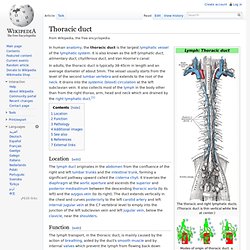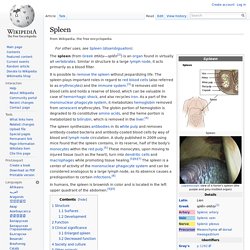

Video 14 Lymph System. Lymphatic System DETOX. Did you know that we are exposed to 82,000 different toxins, chemically-based products and processed...

Did you know that we are exposed to 82,000 different toxins, chemically-based products and processed foods in our environment weekly? Detoxification is the body’s natural, ongoing process of eliminating harmful toxins from the body so that it can function at its best. Toxins are man-made chemicals found in the air, water, food, household cleaners and cosmetic products as well as waste products produced by normal cellular activity. Az ízületi pumpa. A legtöbb testszövet gyógyulásának sebessége a vérellátástól függ.

Az ízületeket egy szállításra szolgáló infrastruktúra, a keringési rendszer látja el, és a vérsejtek azok a szállító járművek, amelyek a tápanyagok odaszállításáért és a salakanyagok (anyagcsere-végtermékek) elszállításáért felelősek. Ebből következően, minél jobb egy adott területen a vérellátás, annál gyorsabban mehet végbe a gyógyulási folyamat. Az ízületet alkotó ötféle szövet – az izomszövet, a csontszövet, az ínszövet, a szalagok szövetei és a porcszövet – közül az izom- és a csontszövetek a leggazdagabban erezettek, tehát ezek regenerálódnak leggyorsabban.
A spektrum másik végén található a porcszövet, amelynek nincs közvetlen vérellátása, így gyógyulása jóval hosszabb időt vesz igénybe. Kutatások kimutatták, hogy a porcszövet mégis rendelkezik önregeneráló képességgel, de ennek alapját egy teljesen más jellegű mechanizmus képezi. Bipedal animals, and their differences from humans. Why are there so few bipedal predatory mammals? : askscience. Why rebounding is so beneficial. My favorite form of exercise is rebounding on the mini-trampoline.

I can rebound several times a day while I'm listening to podcasts on my ipod or watching television. Most importantly, rebounding is FUN, so we stick to it! Have you ever noticed how children naturally enjoy jumping on a bed? LymeNet Flash: Rebounder vs jogging/running for lymph flow. ALWAYS keep springs covered.

If a cover does not come with your model, make one that withstand the breaking of a spring. Probably about 30 years ago, when these first came out, I had one and used it an hour a day. One day, a spring broke and rocketed across the room, shattering a big, sturdy glass picture frame into a million pieces. Had someone been in the path, they could have been seriously injured or even killed. Really. Spring DO become fatigued from wear. And - be sure the spring cover is going to work if needed. The Lymphatic System - Blood Pressure and Flow. Bipedalism. An ostrich, one of the fastest living bipeds Few modern species are habitual bipeds whose normal method of locomotion is two-legged.

Within mammals, habitual bipedalism has evolved multiple times, with the macropods, kangaroo rats and mice, springhare,[1] hopping mice, pangolins and homininan apes, as well as various other extinct groups evolving the trait independently. In the Triassic period some groups of archosaurs (a group that includes the ancestors of crocodiles) developed bipedalism; among their descendants the dinosaurs, all the early forms and many later groups were habitual or exclusive bipeds; the birds descended from one group of exclusively bipedal dinosaurs. A larger number of modern species utilise bipedal movement for a short time. Several non-archosaurian lizard species move bipedally when running, usually to escape from threats. Definition[edit] The word is derived from the Latin words bi(s) 'two (2)' and ped- 'foot', as contrasted with quadruped 'four feet'. Standing. Lymphatic system. The lymphatic system is part of the circulatory system, comprising a network of lymphatic vessels that carry a clear fluid called lymph (from Latin lympha meaning water[1]) directionally towards the heart.

The lymphatic system was first described in the seventeenth century independently by Olaus Rudbeck and Thomas Bartholin. Unlike the cardiovascular system the lymphatic system is not a closed system. The human circulatory system processes an average of 20 litres of blood per day through capillary filtration which removes plasma while leaving the blood cells. How do lymphatic vessels move fluid. Thoracic duct. In human anatomy, the thoracic duct is the largest lymphatic vessel of the lymphatic system.

Lymphatic System: Facts, Functions & Diseases. The lymphatic system is a network of tissues and organs that help rid the body of toxins, waste and other unwanted materials.

The primary function of the lymphatic system is to transport lymph, a fluid containing infection-fighting white blood cells, throughout the body. The lymphatic system primarily consists of lymphatic vessels, which are similar to the circulatory system's veins and capillaries. The vessels are connected to lymph nodes, where the lymph is filtered. The tonsils, adenoids, spleen and thymus are all part of the lymphatic system. There are hundreds of lymph nodes in the human body. Error loading player: No playable sources found. Human Anatomy: Learn All About the Human Body at InnerBody.com. Spleen. The spleen synthesizes antibodies in its white pulp and removes antibody-coated bacteria and antibody-coated blood cells by way of blood and lymph node circulation.

A study published in 2009 using mice found that the spleen contains, in its reserve, half of the body's monocytes within the red pulp.[5] These monocytes, upon moving to injured tissue (such as the heart), turn into dendritic cells and macrophages while promoting tissue healing.[5][6][7] The spleen is a center of activity of the mononuclear phagocyte system and can be considered analogous to a large lymph node, as its absence causes a predisposition to certain infections.[8] In humans, the spleen is brownish in color and is located in the left upper quadrant of the abdomen.[4][9] Structure[edit] The spleen, in healthy adult humans, is approximately 7 centimetres (2.8 in) to 14 centimetres (5.5 in) in length. Surfaces[edit] How the equine lymphatic system affects the health of the horse - Horse Hero. Of all the horse’s biomechanical systems, perhaps one that is least understood or looked at is the lymphatic system.

Many people do not realise the extent to which this system affects the overall health of our horses…. Much of our current research on equine lymphatics has been conducted at the Veterinary University at Hannover in Germany, where they have shown significant differences between the equine lymphatic system and that of the humans, and this has profound implications on the way we need to look at and treat lymphatic problems as well as how we manage our horses on a daily basis. I hope to explain this complicated system in simple terms so that it is more easily understood, and I will be using examples from the human lymphatic system as well as the equine system because we can draw useful parallels between the two.